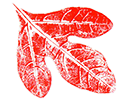Joe-pye weeds are tall, native wildflowers that produce a large, pink cluster of flowers in the late summer / fall. Five species of joe-pye weeds (Eutrochium sp.) can be found in the eastern U.S. The three most common species are hollow joe-pye weed (Eutrochium fistulosa), spotted joe-pye weed (Eutrochium maculatum), and sweet joe-pye weed (Eutrochium purpureum). In the wild, hollow joe-pye weed and spotted joe-pye weed tend to be found in sunny, moist locations, while sweet joe-pye weed can be found in drier and partly shady locations.

All of the joe-pye weeds are magnets for pollinators. Some of the butterflies that visit joe-pye weeds include tiger swallowtails, monarchs, skippers, and azures. Joe-pye weeds are also highly attractive to bees including honey bees, bumble bees, cuckoo bees, and leafcutter bees. It is also a host plant for the caterpillars of several moth species. After the flowers go to seed, swamp sparrows will often feed on the seeds.
Recently, joe-pye weeds have become a common addition to pollinator gardens and other garden settings with a focus on native species. They do especially well in rain gardens, near downspouts, or in other wetter areas with a relatively rich soil. Depending on the species and location, joe-pye weeds can get relatively tall – up to 8 feet, although usually closer to 5 or 6 feet. If you want them to be shorter, you can always cut them back in the early spring which may also promote branching and more flowers on a bushier plant. In some locations, joe-pye weed can spread quite a bit so it might not be suitable for super small spaces.
Like many native plants that have become popular for landscaping, there are several cultivars available through the horticulture trade. These can often be recognized by having a name in quotation marks or var. something after the scientific name. However, it is always best to plant the straight, wild-type variety when possible because little research has been done on most cultivars to determine whether they are as attractive to pollinators or have the same nutritional profiles as their wild ancestors.

This article was part of Shannon’s original Kentucky Pollinators and Backyard Wildlife blog which evolved into the blog for Backyard Ecology.

Backyard Ecology: Exploring Nature in Your Backyard
Nature isn’t just “out there.” It’s all around us, including right outside our doors. Hi, my name is Shannon Trimboli, and I am the host of Backyard Ecology. I live in southcentral Kentucky and am a wildlife biologist, educator, author, beekeeper, and owner of a nursery specializing in plants for pollinators and wildlife conservation. I invite you to join me as we ignite our curiosity and natural wonder, explore our yards and communities, and improve our local pollinator and wildlife habitat. Learn more or subscribe to my email list at www.backyardecology.net.

Leave a Reply